FINDING MY ROOTS
FINDING MY ROOTS
Totipotent Cells
Take a look at new shoots growing on a favorite shrub or vine and you’ll see that the bases of these shoots may be beginning to toughen up, becoming woody. Such shoots, snipped from the mother plant as so-called half-woody cuttings, can be rooted to make new plants. Two other types of stem cuttings are softwood cuttings, taken while shoots are still green and succulent, and hardwood cuttings, taken from thoroughly woody, often leafless, shoots.
You can make whole, new plants from any of these cuttings; I’ve done it for years. But be careful because rooting cuttings to make new plants can become addictive. And then you have to figure out what to do with all your new plants. (Hence, my annual plant sales.)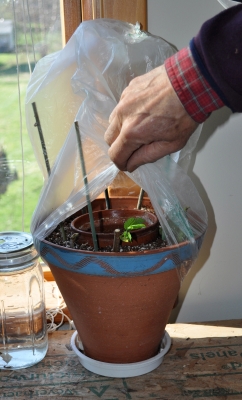
Cuttings are one of many ways to clone plants, that is, produce new plants that are genetically identical to the mother plant from which the stems were taken. All this is possible because of “totipotence” which, quoting from my book The Ever Curious Gardener, “is a ten dollar word that refers to the potential ability of any part of a plant . . . to give rise to any other part of a plant, even to a whole new plant. That’s because all of a plant’s cells (with exceptions, such as with chimeras . . . and reproductive cells) house identical genetic information. Depending on the cellular environment and other influences, a cell may become a root, a petal — any part of a plant.”
Of course just because a cell or group of cells (such as a stem) can give rise to any part of a plant doesn’t mean it will. I’ve rooted lots of plants as stem cuttings. And I’ve often also failed to root lots of plants as stem cuttings. Success depends on a green thumb — no, no, just kidding! It depends on the plant species, some being inherently harder to root than others; humidity, temperature, preparation of the cutting; time of year; maturity of plant part, with juvenile stems (plants not old enough to flower) generally rooting more easily than mature stems.
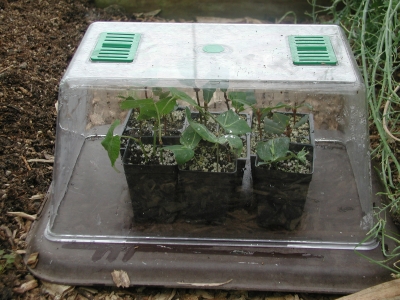
Clear dome maintains humidity in the propagator
Help with Hormones
Auxins are plant hormones that play an important role in rooting cuttings. They’re produced naturally in plants. Apply auxins directly to the bases of your cuttings and rooting can be hurried along; you might also get an increase in the percentage of cuttings that root as well as the number and quality of roots that form.
The problem is that natural auxins decompose too quickly to be of practical use once extracted from a plant. However, auxins can still be used to help cuttings to root — by applying commercially available, synthetic auxins, such as IBA and NAA, instead.
These synthetic rooting hormones are available either in liquid or powder form. Concentrations and combinations of auxins vary with manufacturer, with higher auxin concentrations generally used for more difficult-to-root species. Fungicides may be added to prevent rotting of cuttings.
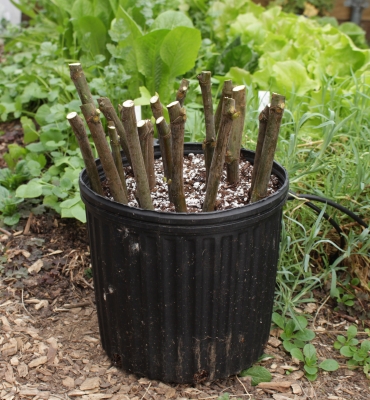
Hardwood fig cuttings
Apply a powdered formulation by dipping the base of a cutting into the powder, tapping to shake off excess, then sliding the cutting into a hole without brushing off the powder. Because varying amounts of powder might adhere to a cutting, rooting response to powdered hormone preparations is less consistent than to liquid ones.
Liquid formulations also are more rapidly absorbed than powdered formulations. Merely soak bases of cuttings in liquid formulations. Soaking time required depends on hormone concentration.
Whether you use powders or liquids to promote rooting, pour only as much material as you need into a clean container, then discard that portion after use. Eventually the materials do deteriorate. An easy way to test whether a material is still good to use is to snip a leaf from a tomato plant, treat its base, then poke the base into moist sand or potting soil. (Some plants root easily from leaf cuttings.) If the preparation is still good, you’ll see more roots after a couple of weeks than beneath untreated leaf cuttings.
Always follow directions to the letter for a particular rooting hormone preparation because hormones can be toxic to plants at certain doses. Another synthetic auxin is 2,4-dichlorophenoxyacetic acid, better known as 2,4-D, a widely used weedkiller and also an ingredient in Agent Orange!
Good Practices Always Needed
Rooting hormones are not absolutely essential in propagation nor do they perform magic. No need to consider using them for propagating willows, chrysanthemums, and other species that are anyway so easy to root. And no need wasting time trying to root stems from a mature apple or maple tree, or any other plant that just does not root from conventional cuttings; they still won’t do so. The ultimate size and vigor of a plant will be unaffected by whether or not hormones were applied during propagation.
I have rarely used rooting hormones. For me, they’re just another chemical that requires special care in handling, sucking some of the fun out of gardening. Instead, I rely on care in:
•Taking a cutting, not letting it dry out and with the bottom cut just below a leaf node;
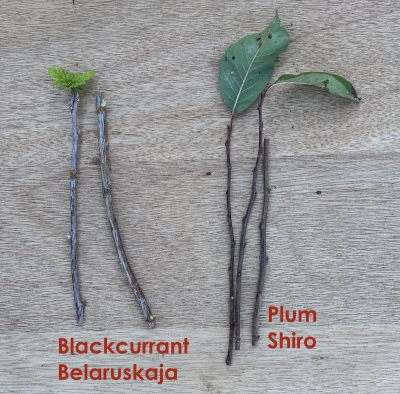
Semi-hardwood cuttings
•A rooting medium that is well-drained, either peat plus perlite or potting soil;
•Maintaining high humidity, either with a clear cover or automatic mister (soon to be constructed);
•Maintaining a moderate temperature or, in cooler weather, bottom heat;
•Maturity of plant part, with juvenile stems, which are parts not old enough to flower, generally rooting more easily than mature stems;
•And bright light but not direct sunlight.
Incidentally, before commercial, synthetic auxins became available, some savvy gardeners would help rooting along by soaking cuttings in the water in which the stems of willow, an extremely easy to root plant, had previously been soaked. It worked!
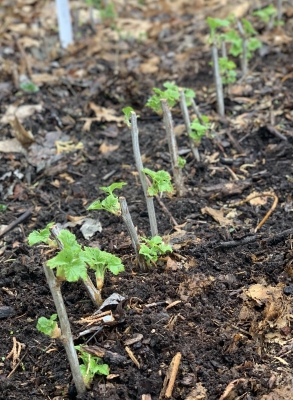
Hardwood blackcurrants rooting outdoors

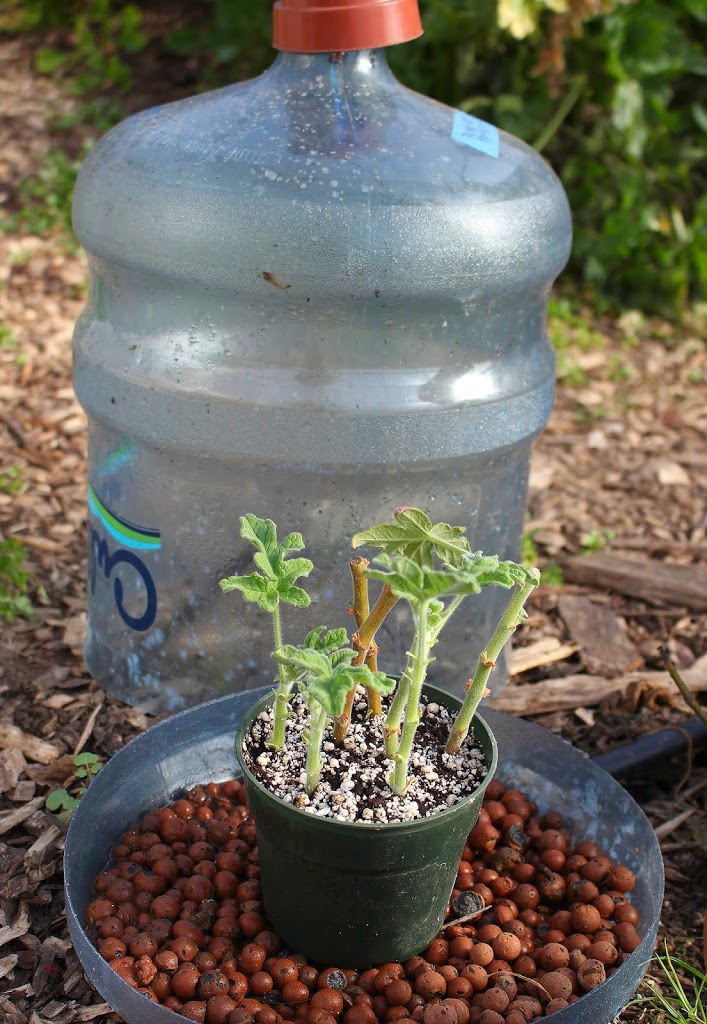
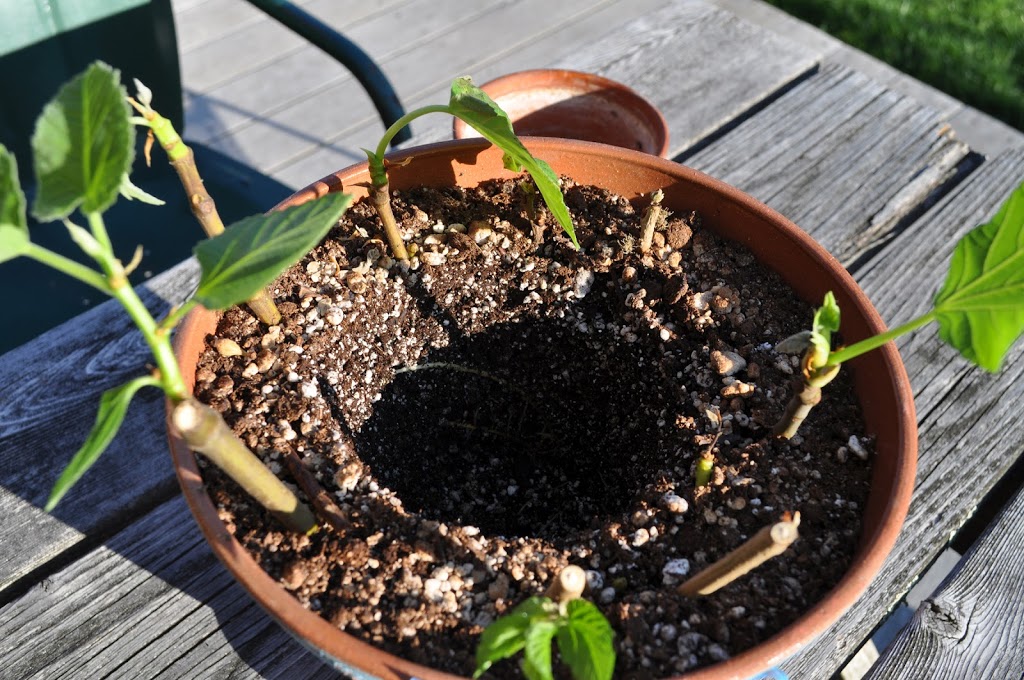

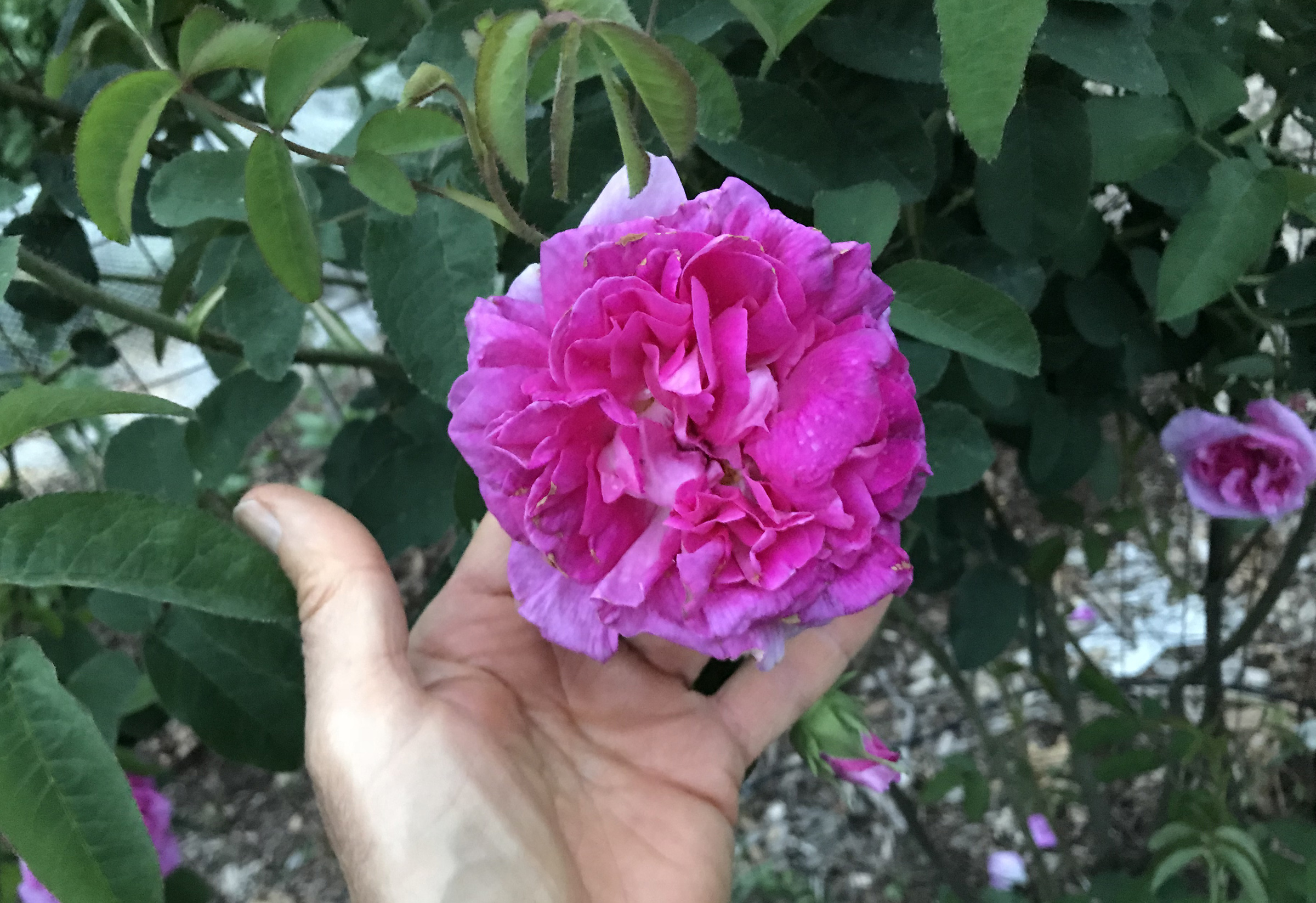
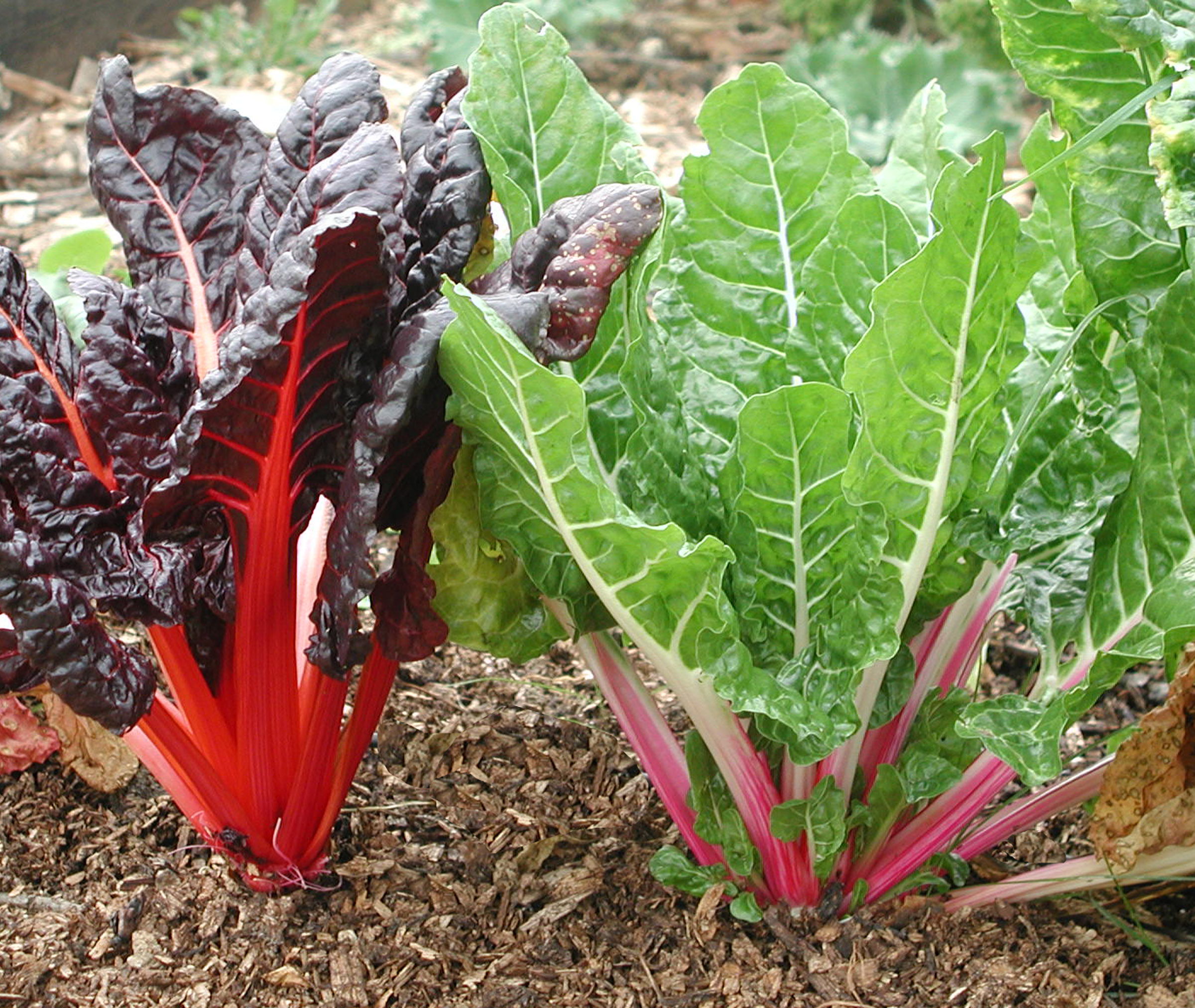
Have you tried Viburnam lantanoides?
Thanks for your advice, I’ll try again.
I’ve never tried it but I expect that it would not be difficult to root.
I saw it mentioned lately that some cuttings exude their own rooting hormones, specifically in the case of houseplants, pothos. It was recommended to use some pothos cuttings in the same water as other types of houseplant cuttings to stimulate them to root more readily. The same idea as the willow cuttings I suppose?
Sounds like the same idea. Willow isn’t necessarily the only plant to help others root.
Do you havw any tips of how to propagate blueberry bushes from cuttins.I have tried doing it several time with no luck.
They can be rooted from either hardwood or softwood cuttings, using the same conditions and kind of stems for any other hardwood or softwood cutting. In my experience, rooting blueberry cuttings require a bit more care and patience than many other plants,
What is the significance of totipotent cells in plant propagation, and how do they contribute to the growth of new plants from cuttings?
Regard Teknologi Telekomunikasi
Totipotence is all important is asexual plant propagation, that is, propagation without seeds. The principle is that every cell except germ cells have the genetic material to become, under the right condition, and part of a plant. So whether you’re starting with a few leaf cells, a piece of stem, or any other plant part, a whole new plant can potentially be made, the plant a genetic replica of its parent.